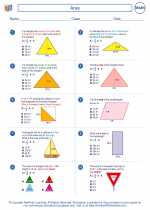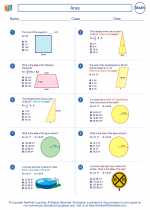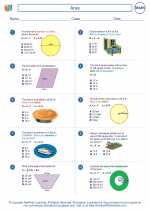Cosine
Cosine is a trigonometric function that represents the ratio of the adjacent side to the hypotenuse in a right-angled triangle. It is denoted by the abbreviation 'cos'.
Definition
In a right-angled triangle, the cosine of an angle is calculated as the length of the adjacent side divided by the length of the hypotenuse.
The formula for cosine is:
cos(θ) = adjacent / hypotenuse
Properties of Cosine
- Cosine is an even function, which means that cos(-θ) = cos(θ).
- The range of the cosine function is between -1 and 1, inclusive. It can never be greater than 1 or less than -1.
- The cosine function has a period of 2π, meaning it repeats its values every 2π radians.
- The cosine function is periodic, meaning it repeats its values at regular intervals.
Graph of Cosine Function
The graph of the cosine function is a smooth, continuous wave that oscillates between -1 and 1. It starts at a maximum value of 1 when the angle is 0, then decreases to a minimum value of -1 at π radians (180 degrees), and then increases back to 1 at 2π radians (360 degrees).
The general form of the graph is:

Usage of Cosine
The cosine function is widely used in various fields such as physics, engineering, and mathematics to model periodic phenomena, analyze waveforms, and solve problems related to angles and distances.
Study Guide
To master the concept of cosine, it is important to practice the following:
- Understand the definition of cosine and how it relates to the sides of a right-angled triangle.
- Learn to calculate the cosine of an angle using the adjacent and hypotenuse sides.
- Study the properties of the cosine function, including its range, periodicity, and symmetry.
- Practice sketching the graph of the cosine function and understanding its key features.
- Work on solving problems involving angles, distances, and periodic phenomena using the cosine function.
By mastering these concepts and practicing regularly, you can develop a strong understanding of the cosine function and its applications.
.



